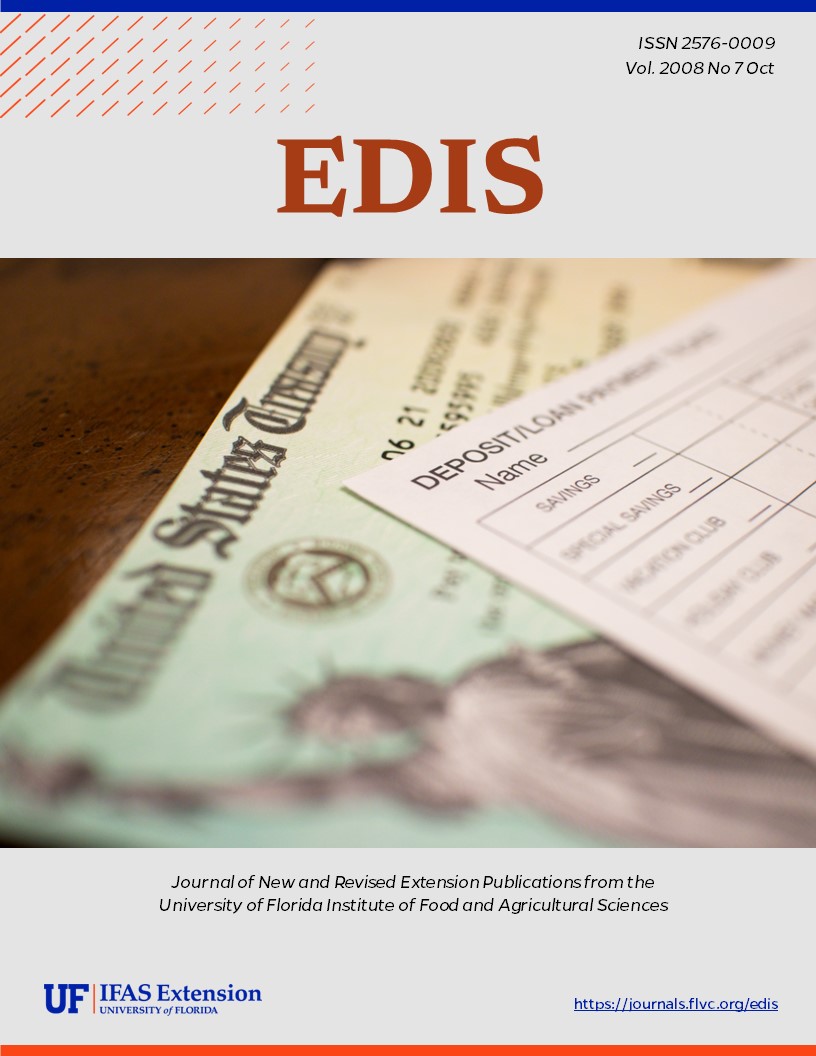Abstract
FCS-8872, a 9-page fact sheet by Amy Simonne and Danielle Treadwell, integrates the key requirements of the Food and Drug Administration Guide to Minimize Microbial Food Safety Hazards for Fresh Fruits and Vegetables (FDA GAPs) and the USDA National Organic Program (NOP) in order to emphasize the areas in which producers can most significantly reduce the food safety risk for their consumers. Includes references. Published by the Department of Family, Youth, and Community Sciences, September 2008.
References
Agricultural Marketing Service (Standards, Inspections, Marketing Practices), Department of Agriculture - National Organic Program, 7 C.F.R. § 205 (2002). Retrieved September 10, 2008 from http://ecfr.gpoaccess.gov/cgi/t/text/text-idx?c=ecfr&tpl=/ecfrbrowse/Title07/7cfr205_main_02.tpl.
Beuchat, L.R. 2006. Vectors and conditions for pre-harvest contamination of fruits and vegetables with pathogens capable of causing enteric diseases. British Food Journal. Vol. 108 (1): 38-53. https://doi.org/10.1108/00070700610637625
Bonanomi, G., V. Antignani, C. Pane, and E. Scala. 2007. Suppression of soilborne fungal diseases with organic amendments. J. Plant Pathology 89(3): 311-324.
Bourn, D. and J. Prescott. A comparison of the nutritional value, sensory qualities, and food safety of organically and conventionally produced foods. Rev. in Food Science and Nutrition: 2002: 42 (1):1-34. https://doi.org/10.1080/10408690290825439
California Department of Health Services (CDHS), California Food Emergency Response Team. 2007. Investigation of an Escherichia coli O157:H7 outbreak associated with Dole pre-packaged spinach. California Department of Health Services: Author.
Centers for Disease Control and Prevention (CDC). 2000. CDC surveillance summaries; March 17, 2000. Morbidity and Mortality Weekly Report (MMWR). 49 (SS-1): 1-51.
Centers for Disease Control and Prevention (CDC). 2006. CDC surveillance summaries; November 10, 2006. Morbidity and Mortality Weekly Report (MMWR). 55 (SS10): 1-34.
Ferguson, J. and M. Ziegler. 2004. Guidelines for Purchase and Application of Poultry Manure for Organic Crop Production (HS973). Gainesville: University of Florida, Institute of Food and Agricultural Sciences. Retrieved September 10, 2008 from http://edis.ifas.ufl.edu/HS217.
Forrester, D. and J. Schaefer. 1996. Infectious diseases of Florida's wildlife (SS WEC-113). Gainesville: University of Florida, Institute of Food and Agricultural Sciences. Retrieved September 10, 2008 from http://edis.ifas.ufl.edu/UW099.
Giuliano, W.M. and G.W. Tanner. 2005. Control and management of wild hogs in Florida (WEC 192). Gainesville: University of Florida, Institute of Food and Agricultural Sciences. Retrieved September 10, 2008 from http://edis.ifas.ufl.edu/UW221.
Ingham, E.R. 2003. The Compost Tea Brewing Manual, 3rd Edition. Corvallis, OR: Soil FoodWeb, Inc.
Kern, Jr., W.H. and P.G. Koehler. 2007. Non-chemical rodent control (ENY-243). Gainesville: University of Florida, Institute of Food and Agricultural Sciences. Retrieved September 10, 2008 from http://edis.ifas.ufl.edu/MG218.
Maghos, F., A. Fotini, and A. Aampelas. 2006. Organic food: Buying more safety or just peace of mind? A critical review of the literature. Crit. Rev. in Food Science and Nutrition 46: 23-56. https://doi.org/10.1080/10408690490911846
Martin, M.B., J. Schaefer and G.M. Allen. 2003. Coping with deer damage in Florida (WEC-135). Gainesville: University of Florida, Institute of Food and Agricultural Sciences. Retrieved September 10, 2008 from http://edis.ifas.ufl.edu/UW128.
Noble, R. and S.J. Roberts. 2004. Eradication of plant pathogens and nematodes during composting: a review. Plant Pathology 53 (5): 548-568. https://doi.org/10.1111/j.0032-0862.2004.01059.x
Treadwell, D.D. 2007. Introduction to organic crop production (HS720). Gainesville: University of Florida, Institute of Food and Agricultural Sciences. Retrieved September 10, 2008 from http://edis.ifas.ufl.edu/CV118.
Wichuk, K.M. and D. McCartney. 2007. A review of the effectiveness of current time-temperature regulations on pathogen inactivation during composting. J. Environ. Engineering Sci. 6 (5): 573-586. https://doi.org/10.1139/S07-011
Winter, C. K. and S.F. Davis, 2006. Scientific Status Summary: Organic Foods. J. Food Sci. 71 (9): R117-R124. https://doi.org/10.1111/j.1750-3841.2006.00196.x
United States Department of Agriculture, Agricultural Marketing Service (USDA ARS). 2002. National Organic Program (NOP). Homepage available at: www.ams.usda.gov/NOP/
United States Food and Drug Administration Center for Food Safety and Applied Nutrition. 1998. Guide to minimize microbial food safety hazards for fresh fruits and vegetables. Retrieved on September 10, 2008 from http://www.cfsan.fda.gov/~dms/prodglan.html.
U.S. Environmental Protection Agency (EPA). 1993. Federal Register: February 19, 1993. 40 CFR Parts 257, 403, and 503. The Standards for the Use or Disposal of Sewage Sludge. Final Rules. EPA 822/Z-93/001.

